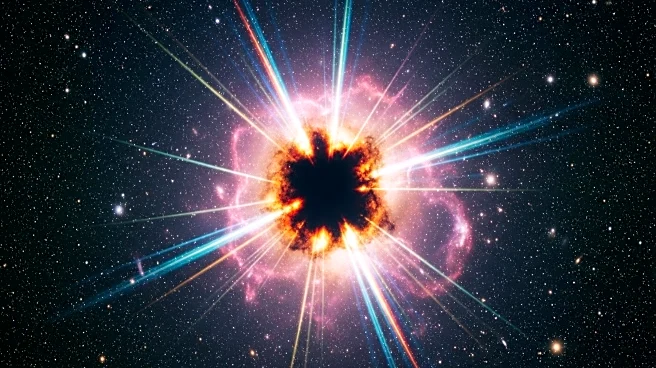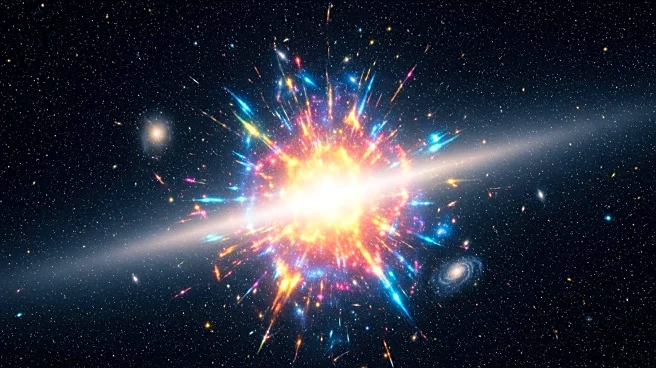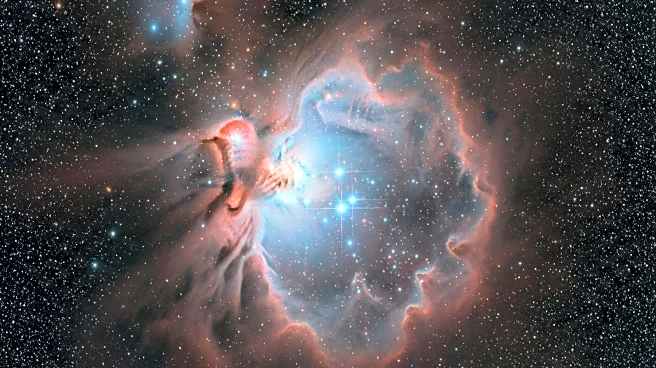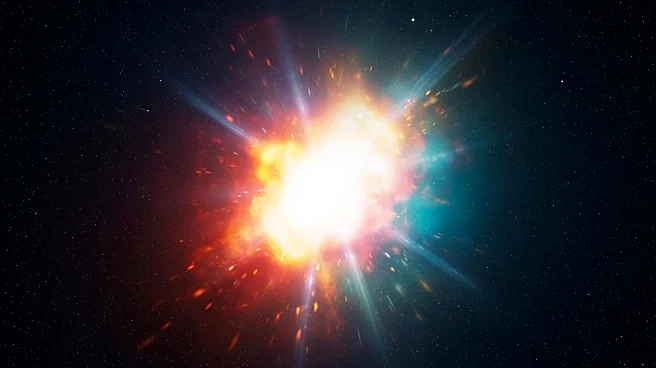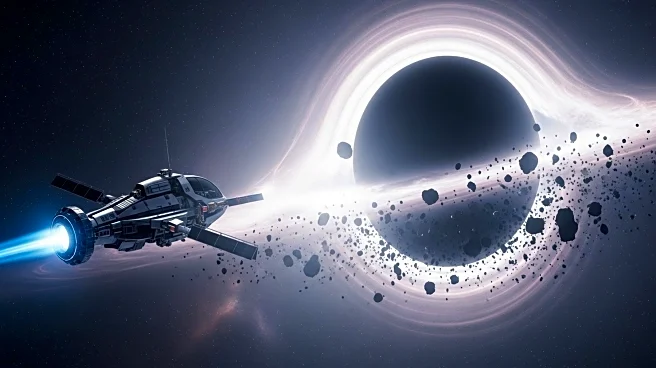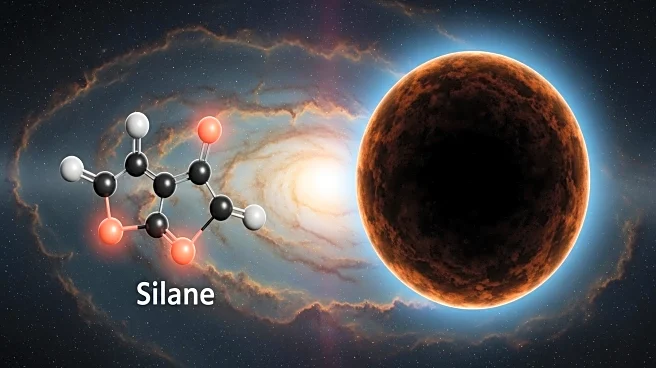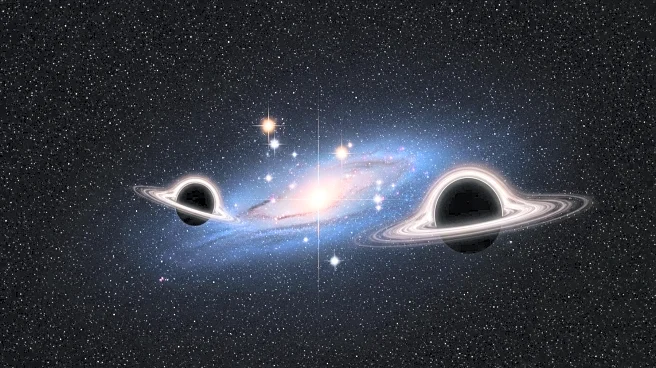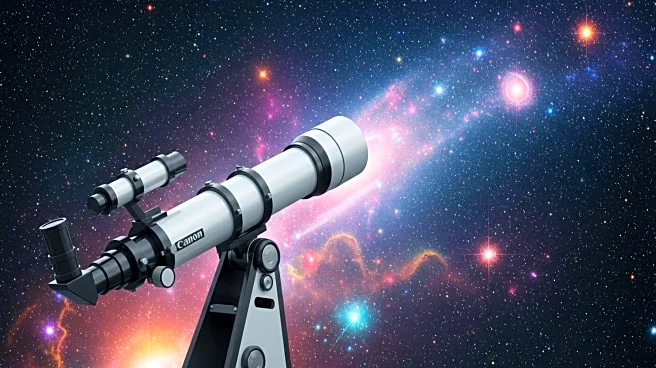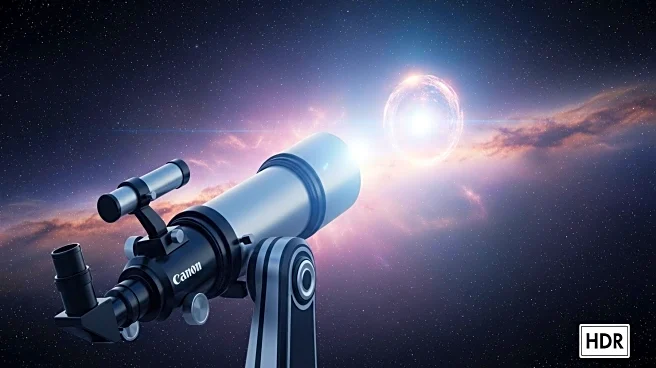What's Happening?
Astronomers have observed a gamma-ray burst (GRB) unlike any seen before, originating from outside the Milky Way. The burst, named GRB 250702B, repeated several times over a day, challenging existing theories about GRBs, which typically occur once due to the destruction of stars. The event was detected by NASA's Fermi Gamma-ray Space Telescope and the Einstein Probe, with the European Southern Observatory's Very Large Telescope pinpointing its location in another galaxy. The burst's periodic nature suggests it may involve a tidal disruption event or an intermediate mass black hole.
Why It's Important?
This discovery could redefine understanding of gamma-ray bursts and black hole formation. The periodic nature of the burst suggests new mechanisms at play, potentially involving rare intermediate mass black holes. Understanding these events can provide insights into cosmic phenomena and the evolution of galaxies. The findings challenge existing models and open new avenues for research into the behavior of black holes and their interactions with surrounding matter.
What's Next?
Researchers are monitoring the aftermath of the explosion using various telescopes, including the James Webb Space Telescope, to gather more data. Determining the true distance of the event will help measure its energy and refine physical models. The team aims to uncover the cause of the burst and its implications for black hole research. Continued observations may reveal more about the nature of the burst and its role in cosmic evolution.
